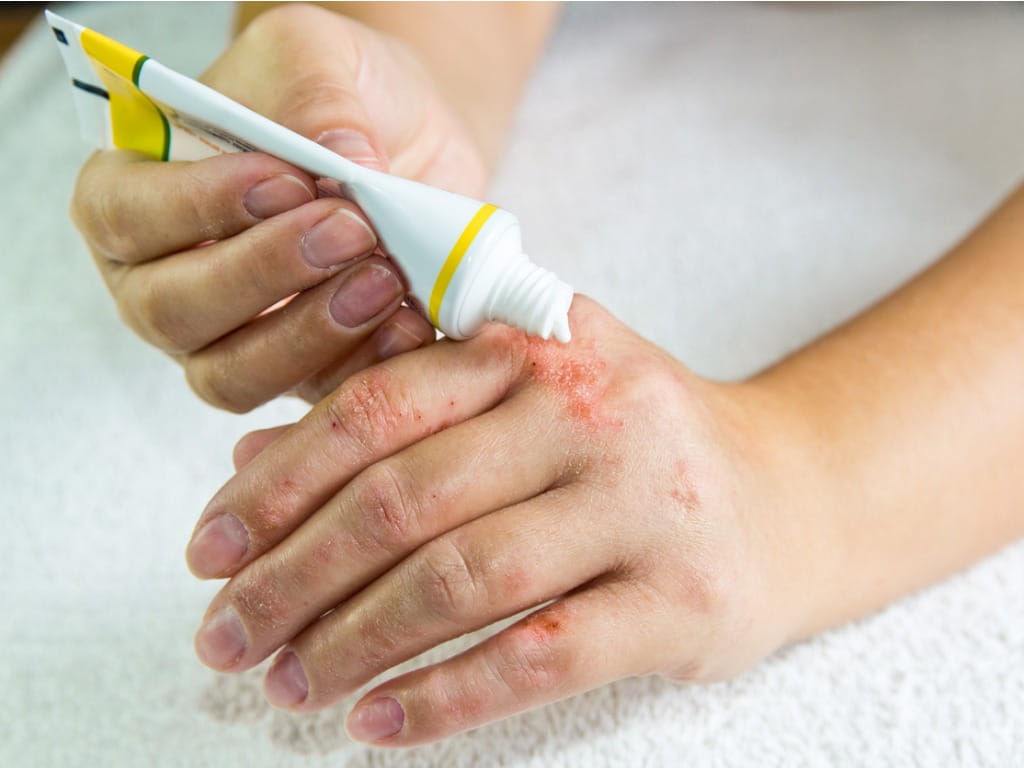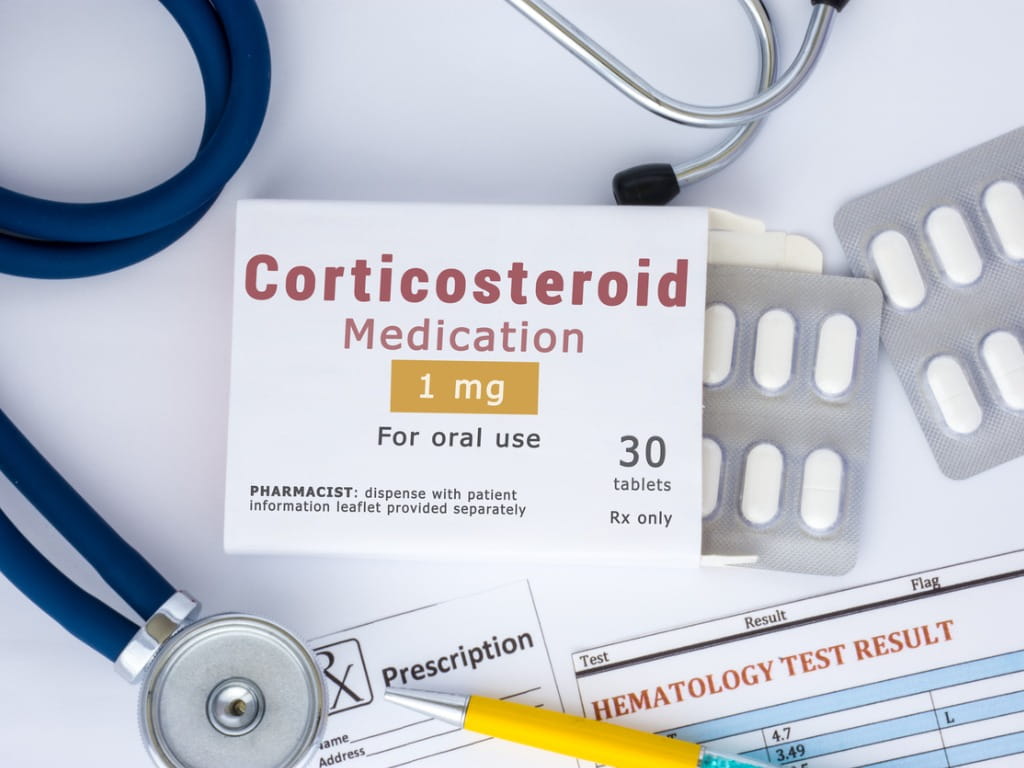Hydrocortisone: Uses and Safety Considerations

The Bottom Line
Hydrocortisone belongs to a class of medicines called corticosteroids. It is available in various forms, including topical creams, pills, and suppositories. It is often used to treat eczema, hemorrhoids, bug bites, mild sunburns, and rashes. Because it might cause fetal harm, using hydrocortisone during pregnancy is not recommended.

What is hydrocortisone?
Hydrocortisone is a drug that belongs to a class of medications called corticosteroids. Corticosteroids work within the body to block certain immune reactions that cause itching and inflammation (swelling). Hydrocortisone is available in multiple forms, including topical creams and ointments, oral tablets, and rectal creams and suppositories. The topical creams come in over-the-counter and prescription strengths, while the oral medications are only available by prescription.
What is hydrocortisone cream used for?
The U.S. Food and Drug Administration (FDA) has approved topical hydrocortisone for treating dermatitis and other skin conditions that cause itching, such as bug bites and psoriasis. Hydrocortisone can also be used to treat sunburn, redness of the skin, and skin swelling. However, hydrocortisone is not FDA-approved for these uses. Rectal hydrocortisone is most often used to treat hemorrhoids, but it can also be used for conditions such as proctitis (inflammation of the rectum) and ulcerative colitis.
Where to not use hydrocortisone
Hydrocortisone should generally not be used inside the vagina or on the external genitalia, such as the penis or testicles, due to the risk of side effects. Hydrocortisone should only be used on the face if specifically recommended by a doctor because it can worsen the symptoms of certain skin conditions, such as some types of acne. Additionally, most hydrocortisone products are unsafe to use in or around the eyes. However, some antibiotic eyedrops and eardrops contain small amounts of hydrocortisone that are safe for short-term use only. Side effects, including cataracts and glaucoma, can occur after repeated use of hydrocortisone-containing products in the eyes. Also, hydrocortisone eardrops and creams do not meet the sterile standards necessary for an eye product. Because of this, using hydrocortisone ear drops in the eyes could lead to eye irritation or infection.
Is hydrocortisone a steroid?
Hydrocortisone is a type of steroid known as a corticosteroid and is a manufactured version of a hormone. Corticosteroids are very different from the anabolic (body-builder type) steroids we often think of when we hear the term "steroid." In men, the inappropriate use of anabolic steroids is associated with side effects such as irritability, breast growth, and infertility. Women who use anabolic steroids can experience unwanted facial hair growth, male-pattern baldness, anger, and a deeper voice. While these are common side effects of anabolic steroids, they are not associated with corticosteroid use. When used topically (on the skin), very little hydrocortisone is absorbed into the bloodstream, which means that hydrocortisone applied topically will target the area where it is directly applied and will generally not cause effects throughout the body.
What are the side effects of hydrocortisone?
Common side effects of topical and rectal hydrocortisone include:
- burning or stinging
- dryness of the area
- redness of the site
- acne
- tingling of the skin
In some cases, hydrocortisone can cause or worsen skin irritation. Using topical hydrocortisone for extended periods can result in weaker skin, pigmented spots, and stretch marks. Common side effects of oral hydrocortisone include upset stomach, restlessness or trouble sleeping, sweating, loss of appetite, and weight gain.
Can you use hydrocortisone when pregnant?
Hydrocortisone has not been extensively studied in pregnant women. In animal studies, using hydrocortisone during pregnancy was associated with fetal harm. Because of this, hydrocortisone and other corticosteroids are often not recommended for use by pregnant women.
What should I do if I use too much hydrocortisone or use it by accident?
If you experience unexpected or unwanted effects after using hydrocortisone, use it by mistake, or think you have used too much, get guidance from Poison Control immediately. Help from Poison Control is available online at www.poison.org and by phone at 1-800-222-1222. Both options are free, confidential, and available 24 hours a day.
Sierra Jaramillo, BS, PharmD
Student Pharmacist, Pharmacist Intern
Poisoned?
Call 1-800-222-1222 or
Prevention Tips
- Use over-the-counter hydrocortisone products as directed on the package label.
- Do not use hydrocortisone inside the vagina or on the penis or testicles.
- Do not use hydrocortisone on your face unless instructed to do so by your doctor, and avoid getting the product in your eyes.
- Wash your hands after handling topical hydrocortisone products to help prevent unintentional contact with the eyes.
- Talk to your doctor or pharmacist if you have questions about when or how to use hydrocortisone.
This Really Happened
A young woman from Tanzania used hydrocortisone on her face for more than 10 years to lighten her skin. After 2 years of using hydrocortisone on her face, she developed excessive stinging and tearing in her eyes. Her skin and eyes also became increasingly sensitive to light and temperature, and over time, her eyesight diminished. She also developed dark, patchy pigmentation on her skin (from Abbasi & Bryson, 2021).References
Cortef. Prescribing information. Pfizer; revised November, 2019. Accessed May 12, 2023.
Pediaderm HC. Complete kit patient information. Arbor Pharmaceuticals. Accessed May 14, 2023.
Preparation H. Drug facts. GlaxoSmithKline. Accessed May 14, 2023.
Poisoned?
Call 1-800-222-1222 or
Prevention Tips
- Use over-the-counter hydrocortisone products as directed on the package label.
- Do not use hydrocortisone inside the vagina or on the penis or testicles.
- Do not use hydrocortisone on your face unless instructed to do so by your doctor, and avoid getting the product in your eyes.
- Wash your hands after handling topical hydrocortisone products to help prevent unintentional contact with the eyes.
- Talk to your doctor or pharmacist if you have questions about when or how to use hydrocortisone.
